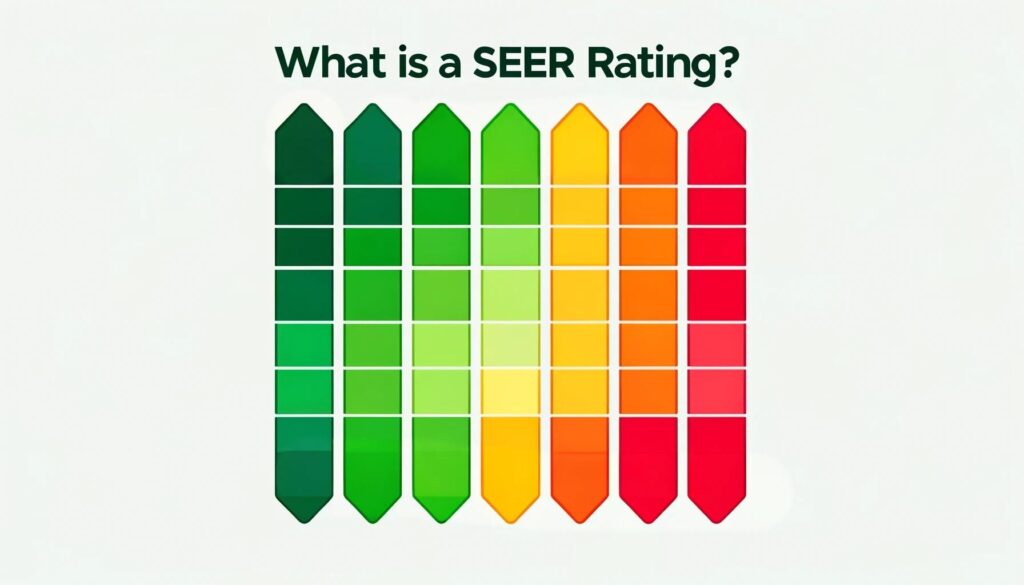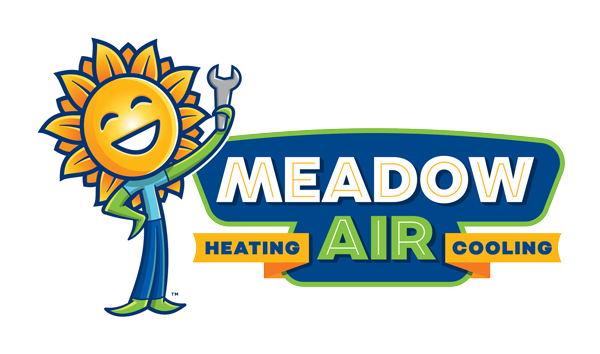What Does Seer Mean in HVAC?
The term SEER may not ring a bell if you’re not familiar with HVAC terminology. What exactly does it mean, and why should it matter to you? How can understanding SEER make a difference in your home’s energy efficiency and comfort?
Key Takeaways
- SEER stands for Seasonal Energy Efficiency Ratio, indicating how efficiently an HVAC system uses electricity to cool a space.
- Higher SEER ratings lead to lower energy usage, reduced utility bills, and enhanced indoor comfort.
- Efficient systems with high SEER ratings help reduce a household’s carbon footprint.
- Updated in 2023, SEER2 provides a more accurate measure of annual efficiency by considering variable conditions.
- SEER ratings are influenced by climate, system size, maintenance, technology, refrigerant type, and design features.

What is SEER?
SEER stands for Seasonal Energy Efficiency Ratio. This metric gauges how effectively an HVAC system can transform electricity into cooling power throughout the cooling season.
The SEER rating reflects the balance between the cooling output of an HVAC system and the electricity it uses. A higher SEER rating signifies increased efficiency, meaning the system delivers more cooling while consuming less power.
For homeowners, this efficiency is of utmost importance. HVAC units with superior SEER ratings require less energy to maintain comfortable indoor temperatures. Therefore, upgrading to a high-efficiency, high-SEER HVAC system can result in significant utility bill savings during the warmer months.
Does SEER Really Matter?
The short answer is yes, it does matter. The more efficient your HVAC system is, the less energy it will consume. This means that you can save money on utility bills while also reducing your carbon footprint. And with global warming becoming an increasingly pressing issue, this is something we should all be concerned about.
SEER ratings can vary widely, generally ranging from 13 to 24 for most modern air conditioners. The higher the number, the greater the efficiency.
For instance, a system with a SEER rating of 20 provides twice the cooling per unit of electricity compared to a system with a SEER rating of 10. A higher SEER rating signifies increased efficiency, meaning the system delivers more cooling while consuming less power.
It’s worth mentioning that since 2006, there’s been an update to how these efficiencies are measured with something called SEER2.
This new standard, which went into effect in 2023, is a bit more in-depth in that it takes varying weather conditions and possible system failures into account when estimating the efficiency of a system over a year. This means it gives a truer picture of how an HVAC system will perform through the changing seasons.
Factors Affecting SEER Ratings
The SEER rating of an HVAC system depends on several key factors that impact the overall efficiency calculation. Understanding what goes into determining SEER can help you make informed choice when selecting a new air conditioner or heat pump.
- Climate: In hotter climates with longer cooling seasons, systems tend to have lower SEER ratings compared to those in milder climates. That’s because the SEER calculation considers seasonal weather data to determine average energy consumption.
- Capacity: Size does matter when it comes to HVAC systems. Larger systems often score lower on the SEER scale because they require more energy to cool larger spaces. It’s all about finding the right balance for your home’s size to ensure efficient energy use.
- Maintenance and Installation: Keep this in mind—how well you install and maintain your system can make or break its efficiency. Proper installation and regular maintenance, like cleaning those coils and changing filters, are crucial for keeping your system running smoothly and efficiently.
- Tech and Equipment Age: Here’s where the latest tech comes into play. Newer HVAC models with up-to-date technology usually have higher SEER ratings. Older systems? Not so much. They tend to lag behind due to wear and tear and outdated technology.
- Refrigerant Type: The type of refrigerant your system uses also affects its SEER rating. Some refrigerants are just better at being efficient, which can boost your system’s performance.
- Features: The technology and design of your HVAC equipment matter a lot. Advanced features like upgraded compressor technology, variable-speed components, and well-designed ductwork and coils improve airflow and heat transfer, boosting that SEER rating.
In summary
Higher SEER and SEER2 ratings indicate more efficient systems that will save you money on your energy bills. The shift to SEER2 provides a more accurate picture of real-world efficiency over an entire cooling season.
When selecting a new HVAC system, be sure to contact Meadow Air. We can assess your climate and cooling needs and recommend a properly sized, high-efficiency system. Believe us when we tell you that the long-term savings on your energy bills will make the investment worthwhile.
Frequently Asked Questions
How Does the Seer Rating Affect the Lifespan of an HVAC System?
Higher SEER ratings not only reflect better energy efficiency but can also influence the longevity of your HVAC system. Systems designed to be more efficient often operate under less strain during peak cooling periods, which can result in fewer mechanical failures and a longer operational lifespan.
Can I Improve My Current HVAC System’s Seer Rating?
While you cannot change the inherent SEER rating of an existing unit, there are ways to improve its overall efficiency. Regular maintenance, such as cleaning air ducts and replacing filters, can help your system run more efficiently.
Additionally, installing a smart thermostat or upgrading components like the condenser fan can optimize performance and mimic some benefits of a higher SEER model.
Are There Any Incentives for Choosing a High-Seer HVAC System?
Many regions offer rebates and tax credits for installing high-efficiency HVAC systems. These incentives are designed to encourage homeowners to invest in technology that reduces energy consumption and environmental impact. Checking with local utility providers or energy efficiency programs can provide information on what incentives are available in your area.
